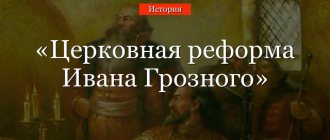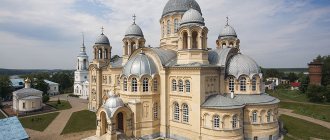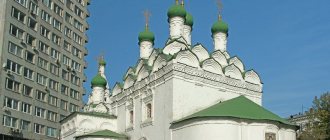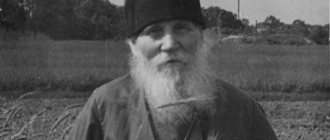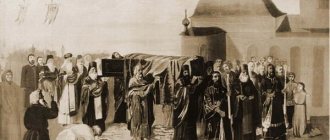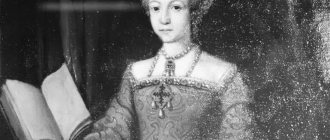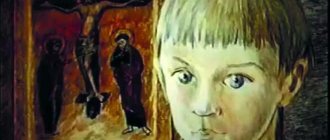07:00, 24.08.2017 27
The fate of the tandem Ivan IV - Kasimov Khan
Photo: gumilev-center.ru (Simeon Bekbulatovich)
The institution of political successors has long been used in politics. It is used today and has been used before. Is there anything we can learn from history on this issue? The historian of the Middle Ages and columnist for Realnoe Vremya Bulat Rakhimzyanov in today’s column finds out how Ivan the Terrible experimented with dual power and dividing the country into parts. Simeon Bekbulatovich, the former Tatar Khan Sain-Bulat, served as an example for him of what life had in store for the former favorite of the first person of the state.
Who is the mysterious Simeon Bekbulatovich? Before baptism his name was Sain-Bulat. He is the Kasimov Khan in 1567-1573, the son of Sultan Bek-Bulat, the great-grandson of Khan Akhmad, who ruled the Great Horde and threatened Ivan III in the “Standing on the Ugra” in 1480. Sain-Bulat, together with his father, went into the service of Ivan the Terrible. In 1575, Ivan IV insisted on naming Simeon “Grand Duke of All Rus'” (1575-1576). Since 1576, Sain-Bulat has been the Grand Duke of Tver. Let's take a closer look at his life and political career.
Khan Kasimova
The exact year of Sain-Bulat's appointment as Kasimov's owner is unknown. Apparently, this happened either immediately after the death of the previous Khan Shah Ali (that is, in 1567), or a little later. In 1570, Sain-Bulat was already the Kasimov king.
Previously, in order to become Kasimov's kings (khans), the Genghisids had to have time to “correct” some Tatar Khanate. However, Ivan the Terrible made an exception for the young Sain-Bulat, who had never been on the throne before, and made him king with his personal power; after him, a series of kings, or khans, actually Kasimov’s, began. What forced the Russian sovereign to take this step is unknown.
Wedding of Simeon Bekbulatovich and Anastasia Mstislavskaya. Miniature of the Front Chronicle. Ill. runivers.ru
In mid-1573, Sain-Bulat converted to Christianity and was named Simeon. Then Ivan the Terrible, doing a thing understandable only to him, married the convert. His betrothed was Anastasia Mstislavskaya, the daughter of the most influential boyar Prince Ivan Fedorovich Mstislavsky, the former head of the zemshchina. After this, Sain-Bulat was deprived of the city of Kasimov and the Kasimov kingdom. The life of Sain-Bulat after accepting Christianity deserves a separate and very thorough study: there are many controversial issues in this period of his life. He was an instrument of Ivan the Terrible’s politics, held the titles of Grand Duke of All Russia, Grand Duke of Tver, his name was heard in the political struggle for power during the Time of Troubles. He died as a simple monk under the name of monk Stephen in 1616. So what happened after 1573 in the life of Sain-Bulat?
Relics of Righteous Simeon the God-Receiver
As Church Tradition says, righteous Simeon the God-Receiver died shortly after meeting the Infant Christ and the Holy Family in the Jerusalem Temple. He was 360 years old.
According to some historical sources, in 1243 the relics of St. Simeon appeared on the shores of the Adriatic Sea in the city of Zara (now the city of Zadar in Croatia). Today the relics rest in reliquaries in two Croatian cities: Zadar and Zagorje. And in the German city of Aachen the right hand (right hand) of the righteous Simeon the God-Receiver is kept.
Heir to the Terrible Tsar?
In the fall of 1575, fate presented Simeon Bekbulatovich with an unexpected surprise. A revolution took place in his life, which, one must think, he subsequently recalled more than once with despair. Tsar Ivan Vasilyevich “abdicated” the throne and elevated Simeon Bekbulatovich to the rank of “Grand Duke of All Rus'”, giving him the Kremlin, the palace, the throne, and the royal exit. Ivan IV himself began to be called the Prince of Moscow - “Ivanets of Moscow”:
“... he installed Simeon Bekbulatovich as king in Moscow and crowned him with the royal crown, and he himself called himself Ivan of Moscow and left the city, lived on Petrovka; He gave all his royal rank to Simeon, and he himself rode simply, like a boyar, in shafts...”
Contemporaries were perplexed. But it was not surprise that turned out to be their main feeling, but fear. Everyone wondered what the next metamorphosis of the formidable king might turn out to be. The royal game of renunciation was already familiar. Ten years ago, the oprichnina began with this.
“Summer 7084th October on the 30th day. This petition was submitted to the Grand Duke Semyon Bekbulatovich of All Russia by Prince Ivan Vasilyevich of Moscow and his children, Prince Ivan and Prince Fyodor Ivanovich of Moscow.” Message to Simeon Bekbulatovich from Ivan VI. Ill. historic.ru
The author of the Piskarevsky chronicler conveys conflicting rumors that were circulating among the Russian people at that time: some claimed that the tsar was frightened by the predictions of the magi, who prophesied “death for the Tsar of Moscow” for this year; others believed that the king “tempted the people: that rumors would spread among the people about this.” Of course, these are nothing more than rumors. The second of them shows how contemporaries imagined the personality and character of Tsar Ivan. He, in their opinion, was ready even for such a large-scale game as giving up the throne in order to hear “rumor” about himself and identify his opponents. However, if we recall the decline of the Soviet empire during the late Brezhnev period, Leonid Ilyich also, in the spirit of the courtiers and sycophantic intrigues that reigned among the “oligarchy of old men,” more than once declared in private companies close to the throne that he was “tired” and was going to retire . According to his scenario, everyone had to beg the ruler to stay. If someone suddenly even remained silent during this masquerade of sycophants, such a “figure” was immediately written off as a political scrap and pushed away from the trough. However, let's go back to the Middle Ages.
As before, during the oprichnina, Russia was divided into two parts - the great reign (the domain of Simeon) and the sovereign's appanage (the domain of Ivan IV). It is interesting to note that this non-standard decision did not cause any disturbances on the part of either the nobility or the people. All this was perceived as normal.
Simeon lived in Moscow, surrounded by a lush courtyard. There are known derogatory formulas for Ivan IV’s address to Simeon Bekbulatovich:
“To the Sovereign Grand Duke Semyon Bekbulatovich of All Russia, Ivanets Vasiliev with his children, with Ivanets and Fedorets, is beaten with his forehead.”
Not everyone believed in dual power, believing that it was “a short-term and not at all sustained test of the division of power,” as one of the ambassadors reported to his king, “some kind of game or whim, the meaning of which is unclear.” IN. Klyuchevsky and S.F. Platonov designated this event as a “political masquerade.” This is not surprising, because historians of that time transferred their thoughts and visions of people of the 19th century to the events of the past. This is not always legal.
Grand Duke John IV Vasilievich. (miniature from the Tsar's titular book of 1672). Ill. wellesley.edu
Here we should not lose sight of the fact that the highest authority and unattainable height for Moscow politicians of the 16th century was the dynasty of Genghis Khan; the model for them was the empire of the Golden Horde, built by his descendants, in the system of which Muscovite Rus' grew and “matured.” That is why the Tatar-Genghisid was not only not a “stranger” for the Russian rulers, but, on the contrary, a welcome and very authoritative person in the system of government of the country. A “loss of honor” for the Russian nobility would rather have been the elevation to the throne of an equal Russian noble boyar from the former appanage princes: Simeon Bekbulatovich was immeasurably superior to all of them in terms of birth. And before Simeon, people from Tatar families happened to occupy high positions in the Moscow state. So, in 1572-1575, just before the beginning of the reign of Simeon Bekbulatovich, the head of the zemshchina was the Astrakhan prince Mikhail Kaibulovich.
Of course, in fact, Ivan IV still ruled Muscovite Russia, but Simeon was not so simple and “sham”; when the king went into action against the Crimean Khan Daulet-Girey, Simeon ruled the country.
Simeon Bekbulatovich served as Grand Duke of All Rus' for only 11 months. Letters of grant written on his behalf are known. In August 1576, Ivan Vasilyevich returned to the throne, and Tsar Simeon was granted the Grand Duchy of Tver with the title of Grand Duke of Tver, and Ivan the Terrible again became Tsar.
Iconography of Simeon the God-Receiver and Anna the Prophetess
Righteous Simeon is one of the key figures depicted on the icon of the Feast of the Presentation of the Lord. Icon painters depicted the saint at the moment when the Mother of God hands him the Infant Christ from hand to hand. Anna the Prophetess in Byzantine and Old Russian icon painting was usually depicted on the icons of the Presentation of the Lord standing behind the back of the Mother of God or the righteous Simeon. Anna the Prophetess was depicted in profile, most often dressed in a red chiton and green maforia (colors could be different); she pointed her finger at Christ. Anna was often painted in the image of a gray-haired old woman with a tired face.
Political ending
After the death of Tsar Fyodor Ivanovich, the noble families vying for power decided to consolidate against Boris Godunov. Simeon became the banner of these forces. Godunov was forced to take action. Kissing the cross to the new Tsar Boris Godunov, each boyar had to promise “Tsar Simeon Bekbulatovich and his children and no one else to come to the Muscovite kingdom...”. Simeon was deprived of his inheritance and reduced to one Tver estate - he was exiled to live in the Tver village of Kushalino. In 1605, those who swore allegiance to Godunov’s son Fedor gave the same obligation. Simeon became poor, blind and lived in poverty. After the election of Boris Godunov to the kingdom, his opponents began campaigning in favor of Simeon, and the frightened Boris exiled the former Tatar khan to a distant city.
False Dmitry I tonsured Simeon at the Kirillo-Belozersky Monastery as a monk under the name of Elder Stefan (1606). Ill. historydoc.edu.ru
False Dmitry I tonsured Simeon at the Kirillo-Belozersky Monastery as a monk under the name of Elder Stefan (1606). In the same year, Vasily Shuisky ordered his exile to Solovki. All this time, Simeon sent letters to the capital with a request to return him to the Kirillo-Belozersky Monastery. Simeon died on January 5 (15), 1616 and was buried next to his wife in the Simonov Monastery.
So, Simeon’s “succession” greatly changed the future life of the former Tatar khan. Ivan the Terrible, apparently, initially did not see him as any “successor” and used him for his own selfish purposes. In general, successor games are not as harmless as it might seem from this text. There are many cases in history when real rulers installed seemingly “dummy” and politically weak figures at the head of the state, but after some time these persons suddenly showed themselves not as weak and weak-willed, but as figures striving for authoritarianism. Their former patrons often suffered from their protégés. And it happened the other way around. In any case, the successor, whatever he may be, is not his patron, and his policy, if he is a real politician and not a figurehead, will in one way or another differ from the line of the former leader.
Bulat Rakhimzyanov
Reference
Bulat Raimovich Rakhimzyanov - historian, senior researcher at the Institute of History. Sh. Marjani of the Academy of Sciences of the Republic of Tatarstan, candidate of historical sciences.
- Graduated from the Faculty of History (1998) and graduate school (2001) from Kazan State University. IN AND. Ulyanov-Lenin.
- Author of about 60 scientific publications, including two monographs.
- Conducted scientific research at Harvard University (USA) in the 2006-2007 academic year.
- Participant in many scientific and educational events, including international scientific conferences, schools, doctoral seminars. He has given presentations at Harvard University, St. Petersburg State University, the Higher School of Social Sciences (EHESS, Paris), the Johannes Guttenberg University in Mainz, and the Higher School of Economics (Moscow).
- Author of the monograph “Moscow and the Tatar world: cooperation and confrontation in the era of change, XV-XVI centuries.” (Eurasia Publishing House, St. Petersburg).
- Area of scientific interests: medieval history of Russia (especially the eastern policy of the Muscovite state), imperial history of Russia (especially national and religious aspects), ethnic history of Russian Tatars, Tatar identity, history and memory.
Prayers to Righteous Simeon the God-Receiver and Anna the Prophetess
Troparion to Righteous Simeon the God-Receiver and Anna the Prophetess
voice 1
Rejoice, God-accepting elder Simeon, received into the arms of the Savior Lord. Rejoice also, O honorable prophetess Anno, having announced the coming into the world of Christ our God, who has crushed the power of the enemy and bestowed upon us great mercy.
Kontakion to Righteous Simeon the God-Receiver and Anna the Prophetess
voice 8
Among God's elect, blessed elder Simeon, in Heaven you stand before the face of Christ God, Who in the temple, like a Child bearing His hands, you received into your arms from the all-pure hands and with Anna the prophetess you confessed as God. We please you with the same praiseworthy voices: Rejoice, God-accepting Elder Simeon, Rejoice, honest prophetess Anno, Rejoice, you who have known God in the Flesh.
Troparion to Simeon the God-Receiver
voice 4
Simeon the Elder is rejoicing today; he has taken the Infant of the Eternal God into his hand, asking to be released from the bonds of the flesh and crying out: my eyes have seen Your worldly salvation.
Kontakion to Simeon the God-Receiver
voice 4
The elder today renounced the yuz, praying for this corruptible life, to accept Christ into his arms, the Creator and Lord.
Family[25]
| Boris I (ruled: 852–889) | Maria | ||||||||||||||||||||||||||||||||||||||||||
| Vladimir (ruled: 889-893) | Gabriel | Yakov | Eupraxia | Anna | |||||||||||||||||||||||||||||||||||||||
| unknown wife | Simeon I (ruled: 893–927) | Maria Sursuvul | |||||||||||||||||||||||||||||||||||||||||
| Michael | Peter I (ruled: 927-969) | Ivan | Veniamin (Boyan) | unknown daughters | |||||||||||||||||||||||||||||||||||||||
For an unknown reason, Simeon deprived his eldest son Michael of the rights to the throne and sent him to a monastery. Subsequently, during the reign of Tsar Peter, Mikhail took part in the rebellion against his brother. Simeon’s other son, Ivan, also took part in a similar rebellion.
Tsarist terror: echoes of the oprichnina
At the end of 1574, a year before Simeon's enthronement, Ivan the Terrible celebrated his wedding with Anna Vasilchikova. The celebration was attended by a select circle of the tsar's close associates, the leaders of the first post-oprichnik government: Boris Tulupov, Vasily Umnoy - Skuratov's successor, Mikhail Pleshcheev, Yakov Mansurov and others. But already on August 2, 1575, the king sent the entire leadership to the scaffold. The executions became the impetus for the investigation of the second Novgorod “treasonous” case. Ivan IV’s personal physician, the “fierce sorcerer” Elisha Bomeley, who prepared poisons for the king to deal with courtiers who had fallen out of favor, also fell into the vortex of terror. Bomeley was also the royal astrologer and fortune teller. Confused in his own intrigues and prophecies, Bomeley decided to flee abroad, but was captured in Pskov. The “magician”, under torture, slandered both the above-mentioned boyars and the Novgorod Archbishop Leonid.
Ivan the Terrible with his guardsmen. (Pinterest)
The archbishop belonged to that circle of clergy who maintained close friendship, first with the oprichnina, and then with the “court.” He subordinated the Novgorod church to the oprichnina administration. The accommodating clergy turned a blind eye to the king’s multiple marriages and other sins. But the cordial friendship came to an end when Grozny announced a ban on land donations in favor of large monasteries.
Ivan the Terrible's abdication is directly related to his internal problems. The fear of general betrayal haunted the king like a nightmare. The king longed for reprisals against influential aristocrats, but no longer had reliable military force. The abolition of the oprichnina deprived Ivan IV of the opportunity to execute “close people”, ignoring the boyar elite. The monarch thought for a long time about how to return the oprichnina without the approval of the Duma and at the same time remain within the framework of the law and the rules of that time. This is how Simeon appeared on the scene.
Song of Simeon the God-Receiver
The Song of Simeon the God-Receiver, or “Now you let go...” are the words of Simeon the God-Receiver from the Gospel of Luke.
This prayer is mentioned for the first time in the Apostolic Constitutions. In the Russian Orthodox Church, the words of Simeon the God-Receiver are read rather than sung during services, unlike Catholics, for example. This happens at the end of Vespers. In addition, Orthodox Christians say “Now you let go...” during the Sacrament of Baptism - but only for infant boys.
Text:
Church Slavonic:
Now do You let Your servant go, O Master, according to Your word, in peace;
for my eyes have seen Your salvation,
which you have prepared in the presence of all people,
light for the revelation of tongues, and the glory of Your people Israel.
Russian:
Now do You let Your servant go, O Master, according to Your word, in peace,
for mine eyes have seen Your salvation,
which You have prepared before all nations,
light for the enlightenment of the Gentiles and the glory of Your people Israel.
Kizilsky Convent of the Holy Righteous Simeon the God-Receiver and the Prophetess Anna
The Kizilsky convent of the holy righteous Simeon the God-Receiver and the Prophetess Anna is located in the village of Kizilsky, Chelyabinsk region, near Magnitogorsk. This is an ancient Cossack village, and the monastery is located on its western outskirts.
Officially, the Kizilsky Convent was opened in 1999. The monastery is very young, but with an interesting backstory. In the early 20s of the twentieth century, two local nuns, an aunt and a niece, went on a pilgrimage to glorify their land in the Holy Land. Their journey lasted 8 years. Returning from Jerusalem, the pilgrims found Soviet Russia instead of the Russian Empire they had left. They did not renounce Christ, gathered for prayer from house to house, and strengthened the local residents in the Orthodox faith.
The first abbess of the monastery since 1999 was the nun of the Assumption Pukhtitsa Monastery, nun Ioanna (Smolkina). In 2004, Abbess Theodora (Podoplelova) became the abbess of the monastery. In 2009, the Kizilsky Monastery celebrated its first anniversary - ten years.
Hungarian campaign and new wars with Byzantium (895-904)
Main article: Bulgarian-Byzantine War (894–896)
“Bulgarian Tsar Simeon: Founder of Slavic Literature”
A. Mucha, 1923
Prince Simeon turned out to be a worthy student of Byzantine diplomacy and concluded an anti-Hungarian treaty with the Pechenegs.
In the spring of 896, Simeon quickly moved north and met the Hungarians in a decisive battle on the Southern Bug (modern Ukraine). In a fierce battle, the Hungarians (probably led by the legendary Arpad) suffered a heavy defeat. The Pechenegs drove the defeated Hungarians far to the west, as a result of which they settled in modern Hungary[43][44][45]. Some historians claim that the decisive battle took place a year earlier (895) south of the Danube, and in 896 the Bulgarians carried out a punitive campaign against the Southern Bug[46].
Simeon “returned proud of victory and triumphant” and became “even more arrogant” (John Skylitzes and Leo Gramatik).
In the summer of 896, he again moved south, completely destroyed the Roman troops at the Battle of Bulgarofigon (modern Babaeski) and besieged Constantinople[23][47].
Bulgarians defeat the Byzantines at Bulgarofigon
Byzantium had to sign peace, cede to Bulgaria the territory between modern Strandzha and the Black Sea and pay it an annual tribute. Bulgarian merchants returned to Constantinople[48][49].
Meanwhile, the Bulgarian ruler established his control over Serbia in exchange for the recognition of Petar Gojnikovich as a Serbian prince[50].
Simeon constantly violated the peace treaty and attacked Byzantium, seizing more and more territories[51].
A new peace treaty (904) established Bulgarian sovereignty over Northern Greece and most of modern Albania[7][52]. The border between Bulgaria and Byzantium passed 20 km north of Thessaloniki[53].
early years
Simeon was born in 864 (or 865), when Bulgaria was already Christian[20]. He was the third son of Prince Boris[21] and a descendant of Khan Krum[22]. Since the throne was intended for his elder brother Vladimir, Simeon was being prepared to become the head of the Bulgarian church[23]. He received an excellent education at the Magnaur school in Constantinople[20][24]. Around 888, Simeon returned to Bulgaria and went to the Preslav Monastery. The family name of the future king of the Bulgarians is unknown; he became Simeon upon accepting novitiate[25].
Meanwhile (889), Prince Boris I also went into a monastery, and Vladimir Rasate, who reigned, tried to restore paganism[26][27].
Boris left the monastery, dethroned and blinded his eldest son (893)[28][29], after which he convened a church-people's council.
The Council made three important decisions: it declared the Bulgarian (Church Slavonic) language the official and only language of the church and state, moved the capital from Pliska to Veliki Preslav and elevated Simeon I to the Bulgarian throne[21][30][31].
Content
- 1 Symbols of the Nation 1.1 Painting and expansion of the temples of the Moscow Kremlin
- 1.2 Production of church decoration and liturgical items in Moscow
- 1.3 Church of the Annunciation on the Settlement - radical reconstruction
- 1.4 Spassky Cathedral, Nizhny Novgorod
- 2.1 Oreshek Fortress - reconstruction in stone
- 3.1 Development of book publishing and paper production in Moscow
- 4.1 Restoration of Murom
Notes
- ↑ 1 2 3 Lundy DR
Simeon I, King of Bulgaria // The Peerage (English) - Lalkov, Rulers of Bulgaria, pp. 23-25.
- Enciklopedija Bǎlgarija. — Akademično izdatelstvo “Marin Drinov”, 1988. OCLC 75865504
- The First Bulgarian Empire (English). Encyclopedia Britannica. Date accessed: July 25, 2021.
- Weigand, Gustav.
1 Istoriko-geografski obzor: 4 Srednovekovie // Etnografija na Makedonija / trans. Elena Pipiševa. — Leipzig: Friedrich Brandstetter, 1924. - ↑ 1 2 Hart, Nancy.
Bulgarian Art and Culture: Historical and Contemporary Perspectives // [1].
— University of Texas at Austin. — P. 21. Archived copy (unspecified)
(inaccessible link). Access date: June 18, 2009. Archived August 10, 2007. - ↑ 1 2 3 4 Bakalov.
Simeon I Veliki // Istorija na Bǎlgarija. - About Bulgaria. — US Embassy Sofia, Bulgaria. Archived copy (unspecified)
(inaccessible link). Access date: June 18, 2009. Archived December 30, 2006. - Castellan, Georges.
Istorija na Balkanite XIV—XX century / trans. Liljana Caneva. - Plovdiv: Hermes, 1999. - P. 37. - ISBN 954-459-901-0. - ↑ 1 2 Zdravko Batzarov.
Old Church Slavonic (English). Encyclopædia Orbis Latini. Date accessed: July 25, 2021. - ↑ 12
Old Church Slavonic (English). orthodoxwiki.org. Date accessed: July 25, 2021. - Bulgar (English). Encyclopedia Britannica. Date accessed: July 25, 2021.
- ↑ 1 2 Paul Cubberley.
The Slavic Alphabets // The World's Writing Systems (English) / Daniels and Bright, eds. - Oxford University Press, 1996. - ISBN 0-19-507993-0. - ↑ 1 2 Curta, Florin.
Southeastern Europe in the Middle Ages, 500–1250. - Cambridge University Press, 2006. - P. 221-222. - (Cambridge Medieval Textbooks). - ↑ 1 2
Fact-archive, https://www.fact-archive.com/encyclopedia/Old_Church_Slavonic#History (unavailable link -
history
) Retrieved July 25, 2021. - ↑ 1 2
Wapedia - Wiki: Preslav Literary School (inaccessible link -
history
) Retrieved July 25, 2021. - Zlatarski, 1971, p. 367.
- ↑ 12
Fine, 1991, pp. 144-148. - ↑ 1 2 Ostrogorsky, George.
Avtokrator i samodržac (Serb.) // Glas Srpske kraljevske akademije. - 1935. - T. CLXIV. - pp. 95-187. - ↑ 12
Fine, 1991, p. 132. - ↑ 12
Zlatarski, 1971, p. 280. - Dimitrov, Božidar. “Hramǎt “Sveti Četirideset mǎčenici” (Bulgarian). National Historical Museum. https://www.historymuseum.org/upload/fck_editor/40%20mazenizi(6).htm. (unavailable link - history
) Retrieved July 25, 2021. - ↑ 12345678
Delev, Bǎlgarskata dǎržava pri car Simeon. - “Hunc etenim Simeonem emiargon, id est semigrecum, esse aiebant, eo quod a puericia Bizantii Demostenis rhetoricam Aristotelisque sillogismos didicerit.” Liutprand of Cremona. Antapodosis, cap. 29, p. 66. Cited in Drinov, Marin.
Južnye slavjane i Vizantija v X century. - 1876. - P. 374. - ↑ 1 2 Agamov A. M.
Dynasties of Europe 400—2016: Complete genealogy of royal houses. - M.: URSS, 2021. - P. 69. - 1120 p. — ISBN 978-5-9710-3935-8. - Annales Fuldenses, p. 408
- Runciman, 1930, p. 133.
- Zlatarski, 1971, p. 283.
- ↑ 12
Todt, Biographisch-Bibliographisches Kirchenlexikon. - Crampton, R. J. (2005). “The Reign of Simeon the Great (893–927).” A Concise History of Bulgaria. Cambridge University Press. page 16※17. ISBN 0-521-85085-1.
- Kalojanov, AnDO (2005-05-11). "Slavjanskata pravoslavna civilizacija" (English). https://liternet.bg/publish/akaloianov/civilizacia.htm.
- John Skylitzes. Skylitzes-Kedrenos, II, p. 254.
- Runciman, 1930, pp. 144-145.
- Theophanes Continuatus, p. 312. Vasilev, A. (1902). Vizantija i araby, II. pp. 88, pp. 104, pp. 108-111.
- ↑ 12
Tsanev, 2006, p. 198. - Zlatarski, 1971, pp. 289-291.
- Runciman, 1930, p. 145.
- Runciman, 1930, p. 146.
- Zlatarski, 1971, p. 295.
- Zlatarski, 1971, pp. 296-299.
- Bakalov, Istorija na Bǎlgarija, “Simeon I Veliki”
- Tsanev, 2006, p. 199.
- Runciman, 1930, p. 147.
- Annales Fuldenses, p. 413
- Harimannus Augiensis, p. 111
- Dimitar Angelov, Stefan Kashev, Boris Cholpanov, Bulgarian military history, p. 259
- Zlatarski, 1971, p. 316.
- Runciman, 1930, p. 148.
- Zlatarski, 1971, pp. 318-321.
- Fine, 1991, p. 141.
- Runciman, 1930, p. 152.
- Zlatarski, 1971, pp. 334-337.
- “In the year 6412 since the creation of the world, indict 7 (904). Border between Byzantines and Bulgarians. In the time of Simeon, by the grace of God Prince of the Bulgarians, under Olgu Tarkan Theodore and under Komit Drista.” Border marking inscription from Narǎš (modern Greece). Uspensky F. I. (1898). "Border post between Bulgaria and Byzantium under Simeon." News of the Russian Archaeological Institute in Constantinople: pp. 184-194.
- Todt, Biographisch-Bibliographisches Kirchenlexikon
- Runciman, 1930, p. 155.
- Tsanev, 2006, p. 212.
- Runciman, 1930, p. 157.
- Bǎlgarite i Bǎlgarija, 1.2.
- Stephenson (2004), p. 22.
- Loud, G. A. (1978). "A re-examination of the 'coronation' of Symeon of Bulgaria in 913." The Journal of Theological Studies (Oxford University Press) xxix (XXIX): pp. 109-120. doi:10.1093/jts/XXIX.1.109.
- Zlatarski, 1971, pp. 367-368.
- Joannes Skylitzes. Historia, 2, pp.283-284
- ↑ 12
Constantinus Porphyrogenitus. De administrando imperio, § 32, p.156 - Theophanes Continuatus. Chronographia, p.388
- Leo Grammaticus. Chronographia, p.244
- Georgius Monachus Continuatus. Chronicon, p.806
- Theophanes Continuatus, p. 389
- Haldon (1999), p. 212
- Haldon (2008), p. 92
- Theophanes Continuatus. Chronographia, pp.388-390
- Haldon (2008), p. 91
- Leo Grammaticus. Chronographia, pp. 294–296
- Joannes Skylitzes. Historia, 2, pp.284-288
- Joannes Skylitzes. Historia, 2, p.288
- Leo Diaconus, Historia, p. 124.
- Bozhilov, Iv. Bulgaria and the Pechenesites, pp. 47-51
- Nicolaus Patriarcha. Epistolae, ep. 9, col. 73A
- Theophanes Continuatus. Chronographia, p.290
- Leo Grammaticus. Chronographia, p.296
- Georgius Monachus Continuatus. Chronicon, p.808
- Obolensky, D. The Byzantine Commonwealth, London, 1971, p.111
- Fine, 1991, p. 156.
- Nicolaus Patriarcha. Epistolae, ep. 9, col. 68A
- Cecaumenus, 32-33, 19-20, Arethas, p.338
- *Vie de saint Luc le Jeune, 449 et s.
- DIEHL, Choses et gens de Byzance, 3 et s.
OSTROGORRSKY, Geschichte des byzantinischen Staates, 187, 1.
- Oxford Dictionary of Byzantium, ed. Alexander Kazhdan, Oxford University Press, 1991.
- Tsanev, 2006, p. 217.
- PGr, ep. 95, col. 301D
- ↑ 123
Cawley, Charles (2006-2007). "Bulgaria: Symeon I 893-927". Medieval Lands. Foundation for Medieval Genealogy. https://fmg.ac/Projects/MedLands/BULGARIA.htm#_Toc137439346. - ↑ 12
Runciman, 1930, pp. 164-165. - Vita S. Mariae Junioris.
- Joannes Scylitzes. Historia. 2, pp.356-357.
- Theophanes Continuatus, pp. 401-402
- Runciman, 1930, pp. 168-169.
- Zlatarski, 1971, p. 459.
- Runciman, 1930, p. 176.
- Runciman, 1930, p. 174.
- Innocenäus III Papa. Ep. CXV, pp. 1112-3
- Mladjov, Ian (1999). "Between Byzantium and Rome: Bulgaria and the West in the Aftermath of the Photian Schism." Byzantine Studies/G‰tudes Byzantines: pp. 173-181.
- Zlatarski, 1971, pp. 489-491.
- Tsanev, 2006, pp. 226-227.
- Runciman, 1930, pp. 181, 301-302.
- Fine, 1991, pp. 160-161.
- Liudprandus. Legatio, p. 186.
- Theophanes Continuatus, p. 415.
- Fine, 1991.
- Runciman, 1930, p. 179.
- Stephenson (2004), pp. 24-25
- "Risuvana keramika". Muzej Preslav. Archived copy (unspecified)
. Access date: March 10, 2007. Archived January 27, 2007.. - Ivanova, “Introduction”, Tǎržestvo na slovoto.
- Ivanova, “Pribavka ot samija hristoljubiv car Simeon”, Tǎržestvo na slovoto.
- Delev, Zlatnijat vek na bǎlgarskata kultura.
- Ivan Božilov, “Tsar Simeon Veliki (893—927): Zlatnia vek na srednovekovna Bǎlgaria”
- Dimitrov, Bulgaria: illustrated history.
